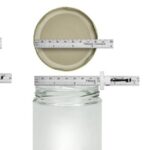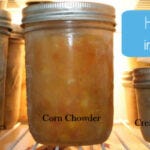
What influences the cost of Fragrance Oil?
From time to time we field questions about what influences the cost of fragrance oil. There are many market factors that influence the cost of a fragrance oil formulation, but before we look at the primary drivers below, we should clarify Fillmore’s commitment to our TruScent fragrance line. TruScent was born of the marketplace need for fragrance that performs well at 6% load in soy candle wax (hot and cold throw), which requires higher quality oil than you might need for paraffin, so that is our benchmark. We personally test every new fragrance to this standard before introducing it to our line. You can be confident that our fragrances are high quality, highly concentrated fragrances that carry every note intended by the perfumer that created them. Quality first. We never substitute cheaper formulations, even when a particular oil spikes in price. We may offer a comparable oil for consideration at a lower price point, but we’ll never change the formula of an existing product name or part number. We noted early on that perfumers always sample their creations in amber glass bottles to protect every nuance that could be altered or diminished by UV or plastic; so we package our TruScent line in amber glass to extend that high level of product integrity. Our goal is to continue offering high-performing fragrance oils at reasonable prices that generate more sales for every customer.
As in most industries, the balance of supply and demand is the driving factor. However, more recently there are additional changes in the industry and state-of-the-world considerations that have been causing even more fluctuations in cost. In most cases, there are a combination of factors driving these changes. Even fragrances that don’t have a “natural” tag often have some naturally sourced ingredients. In all of the considerations below, when there’s a shortage of one thing, the demand (and the cost) of the likely replacements or suitable substitutions are also driven up. It’s not unusual for these factories to specialize in certain classes of ingredients…which can amplify the impact of the shortage quite quickly.
In addition, the longer the time in which the issue will likely be resolved, the more likely the chance of stock-piling…which inflates the demand.
Changes in Regulations & Cost of Compliance
As raw materials for many fragrances, both those harvested from natural resources and those synthesized in a lab, are sourced from around the world. Increased awareness of environmental factors and workers’ rights continue to prompt changes in policies across the globe. The cost of improvements to meet new requirements – cleaner production processes, reduction in carbon emissions, reduction of or mitigation of waste, improved working conditions or compensation, etc. – is passed along. In some of these cases, production may need to be paused – which may cause a shortage – which can often cause a price increase at least until production has resumed.
In some countries, plants may be required to adhere to rolling black-outs in order to comply with clean air initiatives, causing delay and/or reduction in production.
While each country may have it’s own regulations, there are several larger entities like the International Fragrance Association or the FDA here in the states, that hold standards that reputable manufacturers or refineries must meet. Each year, the list of ingredients that come up for review, or are assigned a different safety use level can trigger a need to re-formulate products, or to change labeling and/or packaging requirements, require updates to IFRA , the Prop65 or the SDS documentation and communicating updates with customers…all adding to the cost of those products.
Unpredictability of Natural Ingredients
Natural ingredients are subject to certain conditions for optimal output. Early, excessive rains or spans of high humidity, dry spells, late or early frost etc. can very quickly and severely impact the performance of crops and the eventual availability of the end product. When growing seasons are cut short, the traditional harvesting practices are interrupted, or the proper curing/drying conditions are thrown off, both the quality of and quantity of the product is diminished.
All naturally plant-sourced ingredients are subject to disease or pests – even those that are not organically managed. Those that are organically managed are especially subject to both disease and pests, and require additional labor in a manual effort to avoid loss.
Discontinued Materials
Factories need to make strategic decisions on what to continue producing, and what to cut from their production line. Products that are less profitable or more of a commodity may be discontinued. The void in the market and the continued demand can drive prices up for those who are still producing it.
World Politics, Unrest, Strikes
The state of foreign affairs, political & civil unrest and tariff wars can all impact the availability and the cost of products at any point. Tariffs or political policies drive up prices of products from certain countries.
Civil unrest and industry strikes can quickly impact not only the production, but also the transport of products. Whether product is help up on rail lines, freight trucks, airfields or on freight liners at ports, it will often drive up the price of goods.
Disasters
Unforeseen events like natural disasters, fires, line failure in the factory, disease (COVID) can cause closures or reduction in rate of productivity, prompting costs of products that are still available to go up.
Changes in Usage
Levels of use for certain ingredients can change rather suddenly in response to social and economic growth, particularly in highly populated regions, throwing off the balance of supply & demand. Examples of this would be mint and eucalyptus as developing countries become more significant consumers of products like toothpaste and other personal care products that are now within reach.





0 Comments